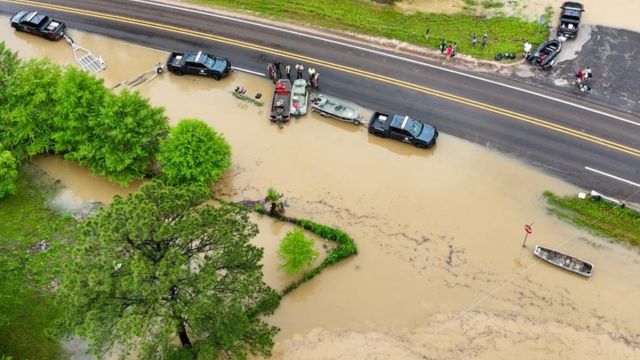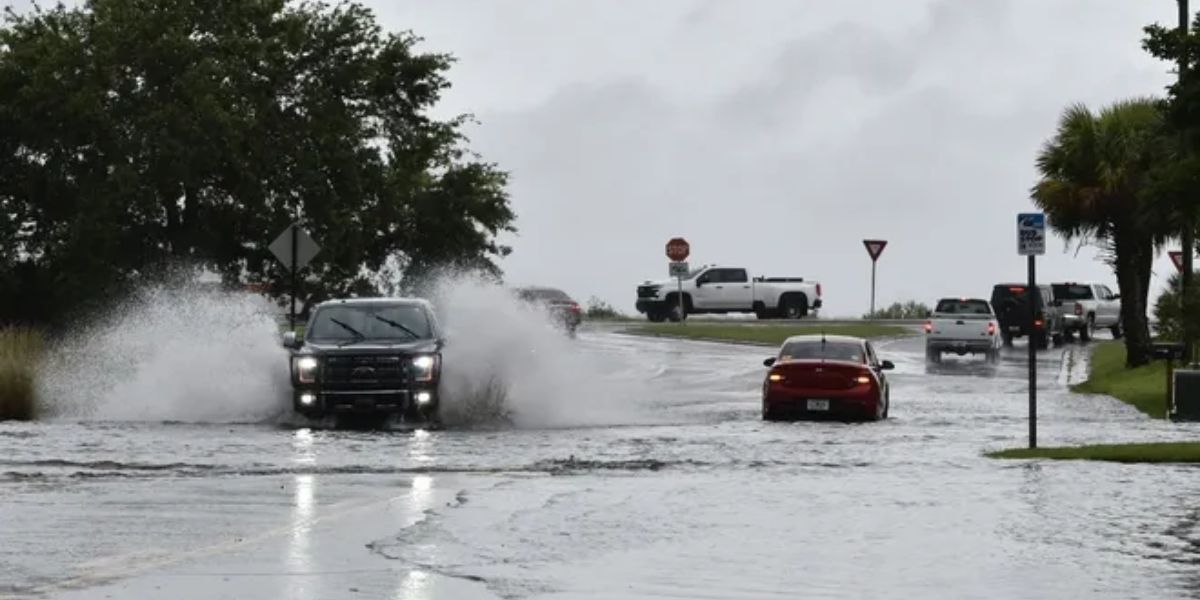WFCN –
Meteorologists from the National Weather Service (NWS) cautioned residents of Texas to steer clear of dangerous floodwaters that could be life-threatening, as relentless heavy rain persisted in the Lone Star State.
During the beginning of the week, powerful storms unleashed up to 9 inches of rain in certain areas of the Texas Hill Country. Due to an abundance of water, certain rivers were in danger of flooding, leading state water authorities to activate floodgates at the Max Starcke and Wirtz dams at the beginning of the week.
The abundant moisture brought great advantages to Lake Travis, a well-liked reservoir in Austin that had been suffering from drought. In just one week, the water level rose by 7 feet. Nevertheless, the rain has shifted its direction towards the southeast, presenting risks as it has led to flooding on Friday.

On Friday morning, meteorologists from the NWS issued alerts for eastern Texas and western Louisiana, including a warning about flash floods, floods, and hazardous weather conditions.
According to Doppler radar, there are thunderstorms in the warned region that are causing intense rainfall. A rainfall of 1 to 3 inches has occurred. The NWS office in Galveston stated that there is currently flooding happening or it is about to start soon. Sudden overflow of tiny rivers and streams, cities, roads, streets, and tunnels, as well as other areas with inadequate drainage and low elevation.
SEE MORE –
Storm Alert: Heavy Rain and Potential Flooding From Strong Storms Through Wednesday Night
“Rotate, don’t submerge when you come across flooded streets.” The cautionary message emphasized that the majority of fatalities during floods happen inside cars. Stay alert to what’s around you and avoid driving on roads that are covered in water.
The silhouette of Houston’s cityscape following a downpour on August 29, 2017. Intense rainfall led the NWS to release a sudden flood alert for the Houston region on Friday.
This month, Houston has been blessed with an abundance of rain surpassing the usual levels. On average, July usually receives a rainfall of 3.77 inches. Throughout this month, the region of Houston has accumulated a total of 9.1 inches of precipitation.
“This year has seen a significant amount of precipitation,” shared Tim Cady, a meteorologist from the NWS, with Newsweek. Typically, by this time of the year, we would have accumulated 28.3 inches, but we have already gathered 45 inches.
The alert for flash floods will end at 12:45 p.m. according to the local time. Cady mentioned his anticipation for the office to prolong its flood alert until Saturday.
Cady cautioned that the intense rain is likely to ease up by Friday afternoon, but there is a possibility of rain lingering into Saturday and Sunday. Given that the soil is already soaked, flooding will happen faster with even a small amount of rainfall. Cady mentioned that there would be “an abundance of water overflowing onto the streets.”
By Friday afternoon, the regions at highest risk of sudden flooding are Corrigan, Seven Oaks, Alabama-Coushatta Reservation, Moscow, and Leggett.
Simultaneously with the issuance of the alert, the NWS branch in Houston shared a radar snippet on X, previously known as Twitter, displaying the advancement of the rainfall.
According to the post, the ongoing arrival of abundant rainfall is leading to a persistent risk of flooding in the region. There is a possibility of further effects on roads, rivers, and streams. Be careful if you have to journey today.
